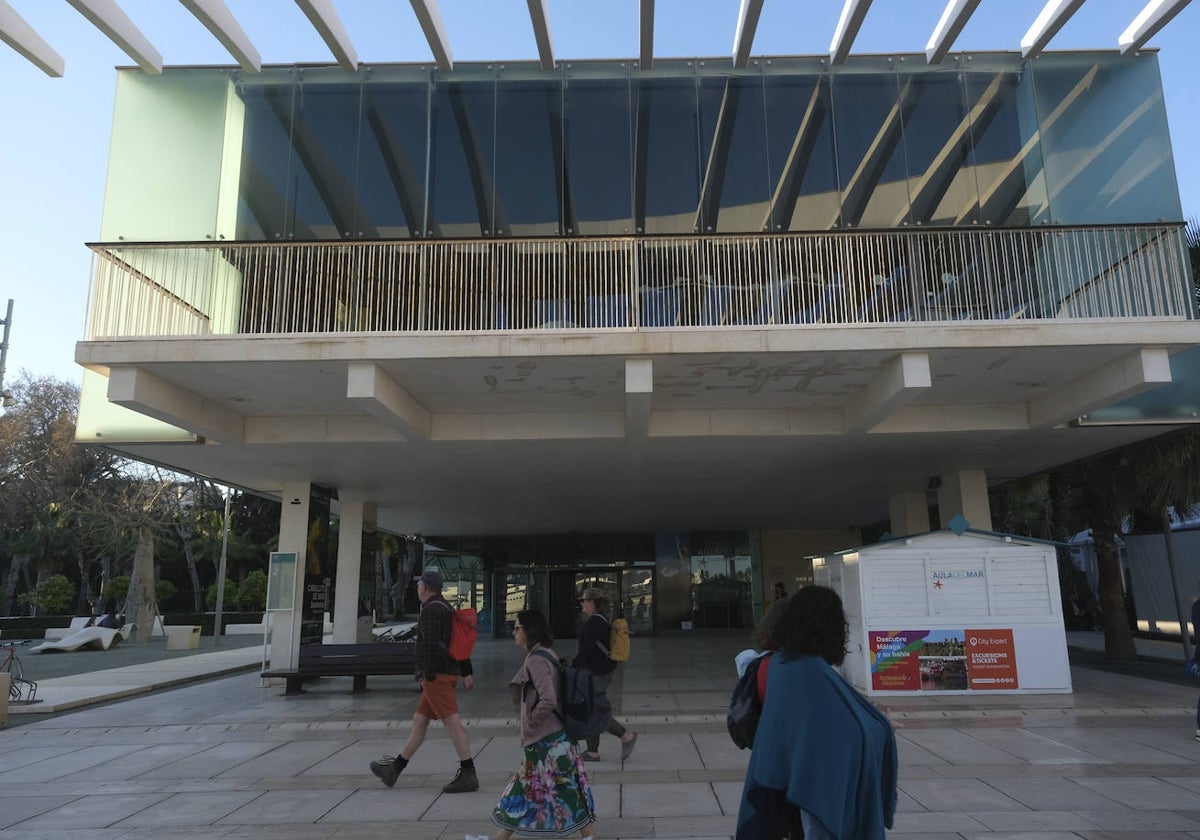Dive into the seas around Malaga without getting wet: futuristic features are coming soon to the refurbished marine museum
The refurbishment of the building, previously occupied by the former museum of the Alboran Sea (Aula del Mar), has been put out to tender for 818,000 euros and will take six months to complete
The former Aula del Mar museum, now split and re-designated as an association and foundation, closed its doors definitively in 2022 in Palmeral de las Sorpresas, the site it had occupied for 11 years after moving in 2011 from its old premises next to the water tower in Muelle Heredia. The building is set to be revived once more as a museum, closely linked to the use of new technologies and real-time observation of images of the seabed and the birds and other wildlife at the mouth of the Guadalhorce river where the river meets the sea.
The refurbishment work has been put out to tender for 818,000 euros (VAT included) and has a completion period of six months, which means that the new museum could be up and running in the first half of next year. The work has already been approved by the Port Authority and the Public Housing Agency, as well as by the relevant departments (Urban Planning, EU Funds) at Malaga city council.
The original idea comes from OMAU (the Urban Environment Observatory), and is connected with Mareto (Malaga Real Time Observatory) that has been anchored offshore since last Christmas right in front of the Baños del Carmen beach. In turn this will be linked with the Oceanographic Centre, due to open imminently in Malaga after finally completing the move from its headquarters in Fuengirola. Basically Mareto is a station built and installed by the company Casco Antiguo that sends out images of the seabed in very high definition and gathers all kinds of chemistry-related data on currents, temperatures, coastal dynamics...
These images will be available to view in 4K in the future museum of Alborania, also as part of the European Life Watch Alborán project. We are therefore talking about a state-of-the-art museum of the Alboran Sea, a technological visitor centre with immersive rooms, interactive screens and special glasses to view the sealife in all its richness.
As a result of this project's direct intervention and other indirect actions, the river mouth of the Guadalhorce will undergo significant improvements, for example, the enlargement of lakes and islets to benefit the rich birdlife that frequents the area, as very recently reported by SUR.
These and other links are intended to reinforce the biodiversity of the Alboran and Mediterranean seas and shorelines and activities will range from research to observation and dissemination. Some other concepts such as citizen science (research conducted with participation by the general public) and the creation of new communities are also gaining relevance.
The building project's dossier reads as follows: "The aim is to use a municipal building as a space for exhibiting and demonstrating LifeWatch ERIC [European Research Infrastructure Consortium] technology in use to observe biodiversity in urban, land and marine environments. In this way, the building will be adapted for use as an exhibition and demonstration space for the scientific-technical results of the project, which are of obvious interest to both residents and visitors to Malaga due to its pioneering nature in this field. This is the first European city to host a space of this type, and the direct impact on visitors when they have direct knowledge of the results obtained and see how all this in turn feeds directly into objectifying the framework forming around the growing and alarming climatic emergency that our planet is suffering."
Here's the lowdown on the numbers
The work will be 80% financed by the European Union. According to the construction project, drawn up by the architect Juan Manuel Peláez Díaz, it is a two-storey building of rectangular shape, with south and north facades of 16 metres wide and east and west facades of 38.5 metres wide. The built surface area according to the land registry is 1,083 square metres. The floor levels of the current building will not be modified in this project.
It will feature an immersive room of 88 m2 with a store-room and a tech room: "A space specially designed to provide immersive virtual reality experiences. Equipped with motion-tracking technologies, projectors and speakers to provide a fully immersive environment." In addition, there will be several exhibition areas (3 with 126 m2 in total) and a sealife classroom (61 m2).

